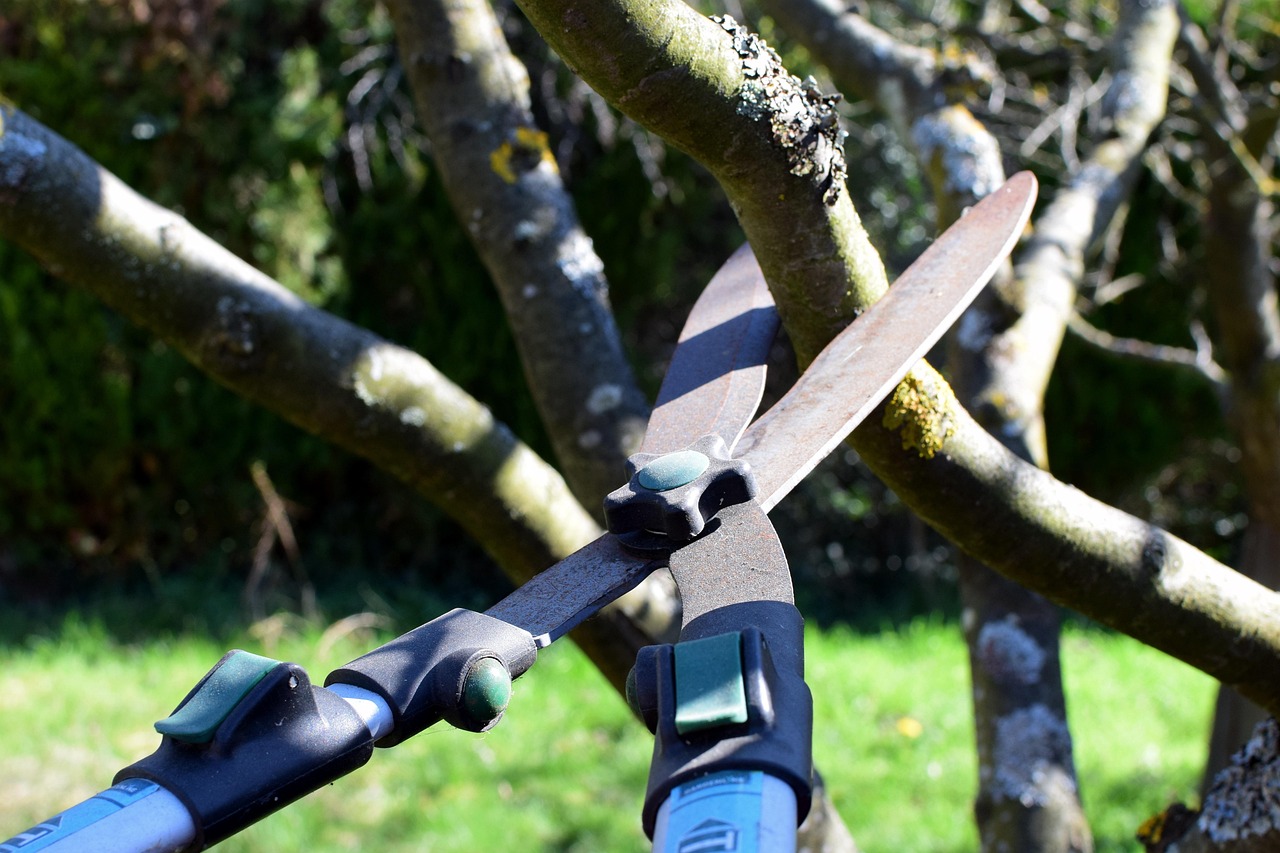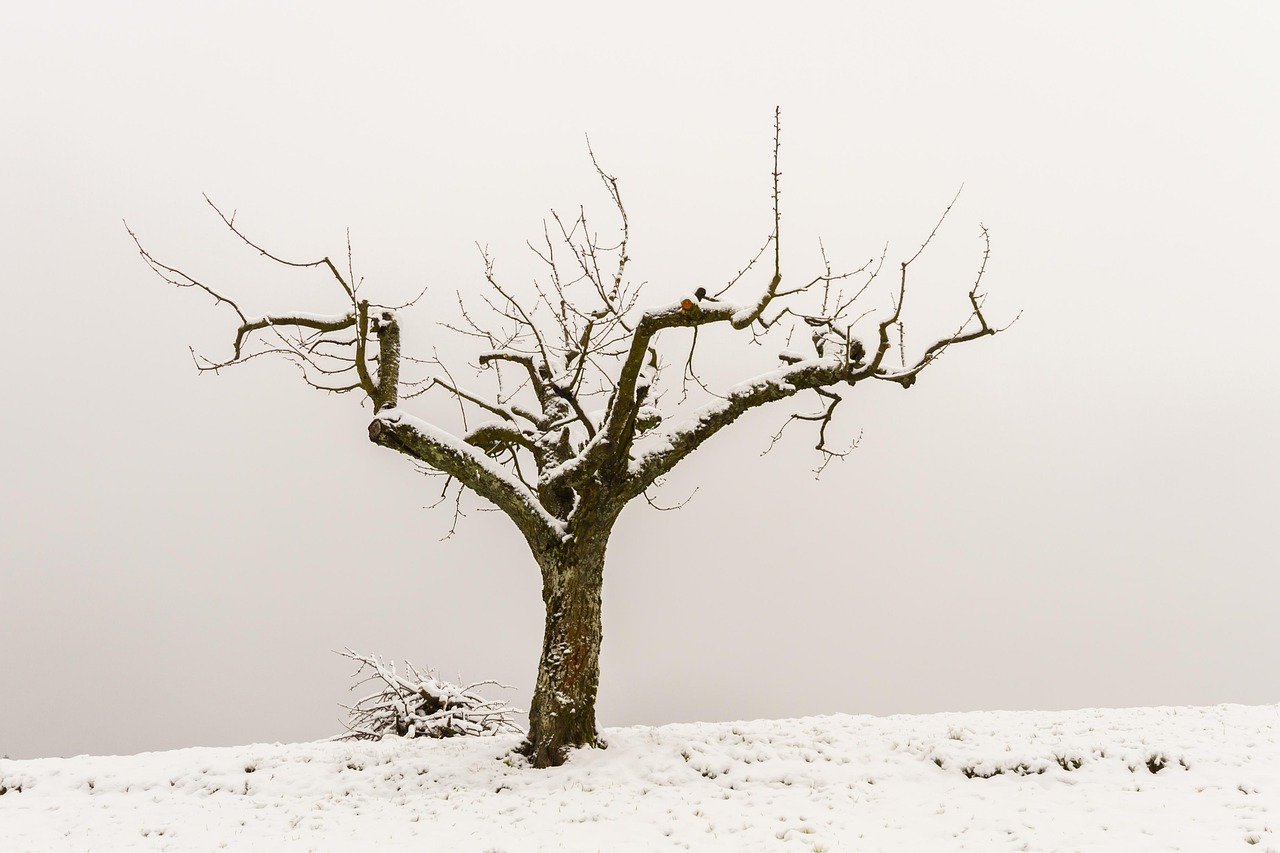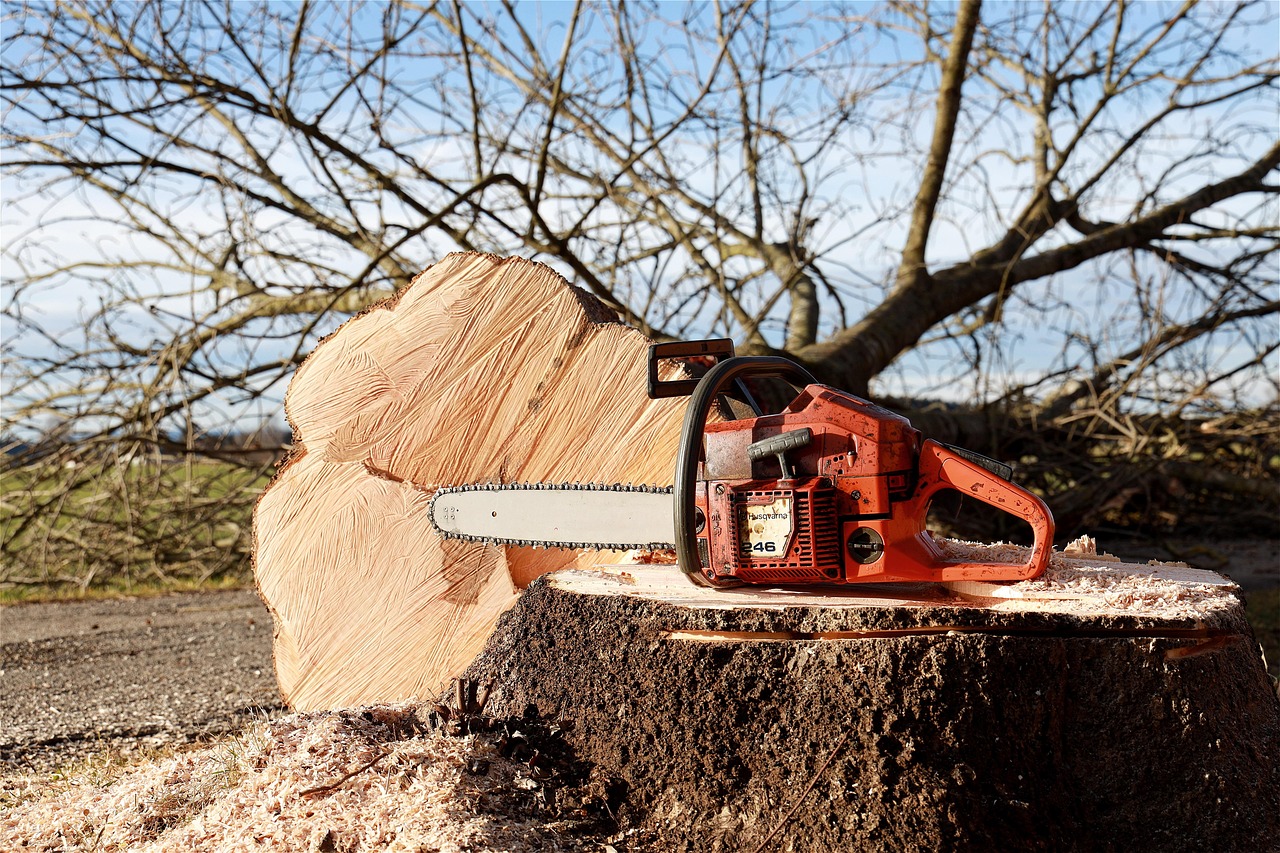Proper tree pruning for hazardous branch removal involves assessing the tree’s health, identifying dangerous branches, and using correct techniques to remove them safely. This process prevents property damage and enhances safety while promoting healthy growth.
Tree pruning is an essential part of maintaining the health and safety of your landscape. It is not just about cutting branches; it requires knowledge, skill, and the right tools. Proper pruning helps trees grow stronger and healthier. Additionally, removing hazardous branches reduces the risk of accidents caused by falling limbs.

Understanding when and how to prune is crucial. Trees have specific growth patterns and cycles. Pruning at the wrong time can harm the tree. Therefore, it is vital to recognize the best times for pruning, which typically are late winter or early spring when trees are dormant. This timing minimizes stress on the tree and encourages new growth.
Why Prune Trees?
Pruning serves several important purposes:
- Enhancing Safety: Removing weak or dead branches reduces the risk of them falling during storms or high winds.
- Promoting Health: Pruning helps eliminate diseased or infested branches, improving the overall health of the tree.
- Encouraging Growth: Proper cuts can stimulate growth in desired areas, shaping the tree for aesthetic purposes.
- Improving Light and Air Circulation: Thinning out dense foliage allows more sunlight and air to reach the inner branches.
Pruning is not just a seasonal task. Regular maintenance is necessary to monitor the tree’s condition. Trees can develop problems quickly, especially during adverse weather conditions. It is advisable to perform visual inspections throughout the year.

Identifying Hazardous Branches
Identifying hazardous branches is a critical step before pruning. Not all branches need to be removed. Here are some signs to look for when assessing tree branches:
- Dead or Dying Branches: These often appear brittle, lack leaves, or have cracks.
- Crown Shaking: If a branch shakes or moves when touched, it might be unstable.
- Visible Disease: Look for fungal growth or discoloration indicating disease.
- Branches Touching Power Lines: These can create hazards during storms or windy conditions.
Once you have identified hazardous branches, it is essential to plan the removal process carefully. Assess the tree’s overall structure and determine which branches will be removed without compromising its integrity.
Tools Required for Tree Pruning
The right tools make a significant difference in the pruning process. Here are some essential tools you should have:

- Hand Pruners: Ideal for small branches up to ¾ inch thick.
- Loppers: Useful for cutting larger branches up to 2 inches thick.
- Saws: For removing larger branches that cannot be cut with pruners or loppers.
- Chain Saw: Best for very large branches or tree removals, but requires safety training.
- Safety Gear: Always wear gloves, goggles, and a hard hat to protect yourself while pruning.
Before starting any pruning work, ensure your tools are clean and sharp. Clean tools help prevent the spread of disease among trees. Sharp blades make clean cuts, which are less likely to harm the tree.
Pruning Techniques for Hazardous Branch Removal
When it comes to removing hazardous branches, employing proper techniques is crucial to ensure safety and minimize damage. Here are some effective methods:
- The Three-Cut Method: This technique is ideal for larger branches. The first cut is made on the underside of the branch, about a foot from the trunk. The second cut is made from above, further out on the branch, to let it fall safely. The final cut removes the stub left on the trunk.
- Thinning Cuts: These cuts remove entire branches at their base to open up the crown of the tree.
- Reduction Cuts: These reduce the length of a branch while preserving its growth direction. Aim to cut back to a lateral branch that can support future growth.
Applying these techniques ensures that pruning promotes healthy growth rather than causing stress to the tree. Always assess each branch’s angle and weight before making any cuts, ensuring stability and safety throughout the process.

Understanding these aspects of tree pruning will help you effectively manage your trees, ensuring both safety and health in your landscape. Proper techniques and awareness can transform your approach to hazardous branch removal, making it a safer endeavor for you and your property.
Safety Precautions When Pruning
Pruning trees, especially when removing hazardous branches, involves certain risks. Ensuring safety for both the person doing the pruning and anyone nearby is paramount. Here are essential safety precautions to consider:
- Wear Protective Gear: Always wear hard hats, safety goggles, gloves, and sturdy footwear to protect against falling branches and debris.
- Inspect the Work Area: Before starting, check for obstacles like power lines, structures, or other trees that could pose hazards while pruning.
- Use Proper Ladders or Scaffolding: If you need to reach higher branches, ensure your ladder is stable and positioned on level ground.
- Have a Spotter: When working on taller trees, having someone to assist or spot can enhance safety by alerting you to potential dangers.
- Work in Good Weather: Avoid pruning during windy or rainy conditions, which can increase the risk of accidents.
When to Seek Professional Help
While many homeowners can manage small tree pruning tasks, some situations require professional assistance. Knowing when to call in the experts is important for safety and effectiveness. Consider these scenarios:
- Large Trees: If a tree is over 15 feet tall, it may be unsafe for you to prune without professional help.
- High Voltage Lines: If branches are near power lines, contact a professional tree service trained in handling electrical hazards.
- Extensive Damage: Trees that are severely damaged or diseased may require specialized techniques for safe removal.
- Lack of Experience: If you feel unsure or lack experience in tree pruning, it is safer to hire a certified arborist.
Aftercare Following Pruning
Proper aftercare is crucial for the recovery and health of the tree post-pruning. Following the right steps promotes healing and minimizes stress on the tree. Here are some aftercare tips:
- Watering: Ensure the tree is adequately watered after pruning. Proper hydration supports recovery and new growth.
- Fertilization: Depending on the tree species and its needs, applying a balanced fertilizer may help stimulate growth.
- Avoiding Stress: Minimize additional stressors such as heavy foot traffic around the tree during recovery.
- Pest Control: Monitor for signs of pest infestation or disease following pruning and address issues promptly.
Signs of a Healthy Tree Post-Pruning
After pruning, monitoring the tree’s recovery is essential. A healthy tree will display certain signs that indicate successful pruning. Here are key indicators:
- New Growth: Look for new leaves or buds developing on the branches where cuts were made.
- No Excessive Wilting: The tree should not show signs of wilting or drooping leaves, which may indicate stress.
- Colorful Foliage: Healthy foliage should appear vibrant and green, signaling that the tree is thriving.
- No Unusual Growths: Watch for excessive sap leaking or unusual growths at the cut sites, which can indicate problems.
The Role of Seasonal Pruning
The timing of pruning can significantly influence tree health and growth. Seasonal pruning aligns with natural growth cycles and environmental factors. Here’s a breakdown of how different seasons affect pruning practices:
| Season | Ideal Pruning Activities | Benefits |
|---|---|---|
| Spring | Light pruning to remove dead branches | Promotes new growth as trees start their growing season. |
| Summer | Thinning cuts to manage foliage density | Keeps trees healthy and avoids overcrowding, allowing sunlight to penetrate. |
| Fall | Avoid major pruning; focus on cleanup | This allows trees to prepare for dormancy without added stress. |
| Winter | Major structural pruning while dormant | This minimizes bleeding and reduces stress on the tree. |
This seasonal approach helps maintain optimal health and growth patterns for trees in your landscape. By understanding the best times to prune and the effects of seasonal changes, you can enhance your tree care strategy effectively.
Caring for Different Tree Species
Diverse tree species have unique requirements when it comes to pruning. Understanding these differences is vital for effective care. Here are some common tree types and their specific pruning considerations:
- Deciduous Trees: These trees shed leaves annually. Prune them in late winter or early spring before new buds emerge.
- Evergreen Trees: These trees retain leaves year-round. Pruning is best done in late spring or early summer after new growth appears.
- Fruit Trees: Prune during late winter or early spring while dormant to encourage fruit production later in the year.
- Trees with Weeping Branches: These require careful consideration regarding branch removal to maintain their natural shape and appearance.
Caring for different species ensures that each tree receives appropriate attention based on its specific growth habits and health needs. By tailoring your pruning practices to specific types of trees, you can enhance their longevity and beauty in your landscape.
Understanding Tree Anatomy for Effective Pruning
Before engaging in tree pruning, it is important to have a solid understanding of tree anatomy. Knowing the different parts of a tree will help you make informed decisions regarding which branches to prune and how to do it effectively. Here are the main components of a tree:
- Roots: The foundational part that anchors the tree and absorbs water and nutrients from the soil.
- Trunk: The central stem that supports the tree and transports nutrients from the roots to the branches and leaves.
- Branches: Extensions of the trunk that support leaves, flowers, and fruits. Healthy branches are crucial for a tree’s overall well-being.
- Leaves: The sites of photosynthesis, where sunlight is converted into energy for the tree.
- Bark: The protective outer layer that shields the tree from pests and diseases.
The Importance of Pruning Cuts
When pruning, the type of cut you make can significantly impact the tree’s health. There are various cuts you can utilize, each serving a different purpose. Understanding these cuts will help you prune effectively:
- Heading Cuts: These cuts remove part of a branch to encourage bushier growth and are typically made above a bud.
- Thinning Cuts: These remove entire branches at their base, which improves light penetration and air circulation within the canopy.
- Reduction Cuts: These reduce the length of a branch while maintaining its structural integrity, directing growth towards a healthy bud.
- Removal Cuts: These involve cutting a branch back to its point of origin, removing it entirely from the tree.
Making clean cuts is essential. Jagged or torn cuts can lead to diseases or pests entering the tree. Use sharp tools to ensure that your cuts are precise and clean.
Common Mistakes in Tree Pruning
Even experienced gardeners can make mistakes when pruning trees. Here are some common pitfalls to avoid when removing hazardous branches:
- Over-Pruning: Removing too many branches can stress the tree and hinder its growth. Always prioritize selective pruning over heavy cuts.
- Incorrect Timing: Pruning at the wrong time can expose trees to stress and disease. Always align your pruning activities with seasonal guidelines.
- Poor Cut Placement: Cutting too close to the trunk or leaving large stubs can harm the tree. Always make cuts just outside the branch collar.
- Ignoring Tree Health: Pruning should not be done on trees that are already stressed or unhealthy without professional guidance.
Understanding Tree Growth Patterns
Recognizing how trees grow can inform your pruning strategy. Trees typically exhibit two types of growth: vertical and lateral. Understanding these patterns is key for effective pruning:
- Vertical Growth: This is characterized by upward growth. To encourage vertical growth, focus on reducing lateral branches that compete for space.
- Lateral Growth: This involves outward extension. To promote lateral growth, prune back vertical branches that are overly dominant.
Each species may have its own growth pattern, so it is essential to research specific tree types in your landscape for optimal pruning strategies.
The Benefits of Regular Tree Maintenance
Regular maintenance and scheduled pruning can significantly enhance the health of your trees over time. Here are some benefits associated with consistent tree care:
- Improved Structural Integrity: Regular pruning helps maintain a balanced shape, reducing the risk of breakage during storms.
- Enhanced Aesthetics: Well-pruned trees look better in landscapes, enhancing property value and curb appeal.
- Pest and Disease Management: Regularly removing dead or diseased branches helps prevent pest infestations and disease spread.
- Increased Yield for Fruit Trees: Pruning fruit trees regularly leads to better fruit production by allowing sunlight to reach all areas of the tree.
The Role of Mulching in Tree Health
Mulching around trees is a beneficial practice that complements pruning efforts. It provides numerous advantages such as:
- Moisture Retention: Mulch helps retain soil moisture, reducing the need for frequent watering.
- Temperature Regulation: It insulates the soil against temperature fluctuations, protecting roots from extreme heat or cold.
- Pest Control: Certain types of mulch can deter pests and prevent weeds from competing with tree roots.
- Nutrient Supply: Organic mulches decompose over time, enriching the soil with nutrients beneficial for tree health.
A layer of mulch around the base of your trees, especially after pruning, supports their recovery and overall health by ensuring they have the necessary resources as they grow back stronger.
The Environmental Impact of Pruning
Tree pruning also has broader environmental implications. Healthy trees contribute significantly to local ecosystems. Some benefits include:
- Air Quality Improvement: Trees filter pollutants from the air and produce oxygen, contributing to better air quality.
- Erosion Control: The roots of well-maintained trees stabilize soil, preventing erosion and promoting healthy landscapes.
- Biodiversity Support: Trees provide habitat for various species, fostering a rich ecosystem.
By engaging in proper tree pruning practices, you not only enhance the health and safety of your landscape but also contribute positively to the environment surrounding you.
The Economic Benefits of Proper Tree Pruning
In addition to environmental advantages, proper tree pruning can yield several economic benefits. For homeowners and property managers, investing time and effort into tree care can result in long-term savings and value enhancement. Here are some key economic aspects associated with tree pruning:
- Increased Property Value: Well-maintained trees enhance curb appeal, which can lead to higher property values. Studies have shown that homes with attractive landscapes sell for more than those with unkempt yards.
- Reduced Risk of Damage: By proactively managing hazardous branches, homeowners can prevent costly damage to their property or vehicles caused by falling limbs during storms.
- Lower Maintenance Costs: Regular pruning helps prevent larger issues down the line, such as disease or structural failure, which can be expensive to rectify.
- Energy Savings: Strategically pruning trees near homes can improve energy efficiency by allowing sunlight to warm the house in winter and providing shade in summer, reducing heating and cooling costs.
Community Benefits of Tree Pruning
Beyond individual property management, tree pruning contributes to community well-being. Healthy trees in public spaces provide numerous benefits that enrich the lives of residents. These include:
- Aesthetic Appeal: Trees beautify neighborhoods and public parks, creating inviting environments for community gatherings and recreational activities.
- Health Benefits: Access to green spaces has been linked to improved mental health and physical well-being. Trees can provide a serene environment for residents.
- Community Engagement: Tree care initiatives often bring communities together. Organizing pruning events can foster a sense of unity among residents while enhancing local landscapes.
Tools and Resources for Successful Pruning
To achieve successful tree pruning, having access to the right tools and resources is crucial. Here are some essential tools and additional resources that can assist you in your pruning endeavors:
- Online Tutorials: Many gardening websites and platforms offer video tutorials demonstrating proper pruning techniques for various tree species.
- Books and Guides: Consider investing in books dedicated to arboriculture and tree care for detailed guidance on pruning methods and tree anatomy.
- Local Arborist Associations: Joining local gardening clubs or arborist associations can provide valuable networking opportunities and access to expert advice.
- Tree Care Apps: Various mobile applications can help you identify tree species, assess their health, and remind you of seasonal maintenance tasks.
Final Thoughts
Proper tree pruning for hazardous branch removal is an essential practice for maintaining the health of your trees and ensuring safety in your landscape. By understanding the anatomy of trees, recognizing the importance of correct pruning techniques, and being aware of seasonal considerations, you can make informed decisions about tree care. Regular maintenance not only enhances the aesthetics of your property but also contributes positively to the environment and community.
The benefits of tree pruning extend beyond individual trees, impacting property values, community aesthetics, and environmental health. By investing time and effort into proper tree care, you create a safer, more beautiful environment that benefits both you and the wider community.
Remember that when in doubt or faced with challenging situations, seeking professional advice or assistance is always a good choice. With the right knowledge, tools, and practices, you can ensure your trees thrive for years to come while minimizing hazards associated with hazardous branches.
Your commitment to tree care reflects a dedication not just to your landscape but also to the health of your local ecosystem. Embrace pruning as a vital part of your gardening routine, and enjoy the numerous rewards it brings.
